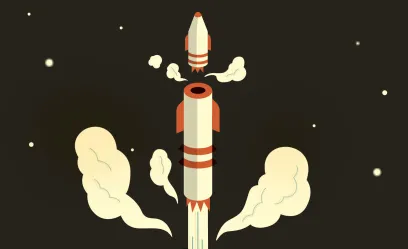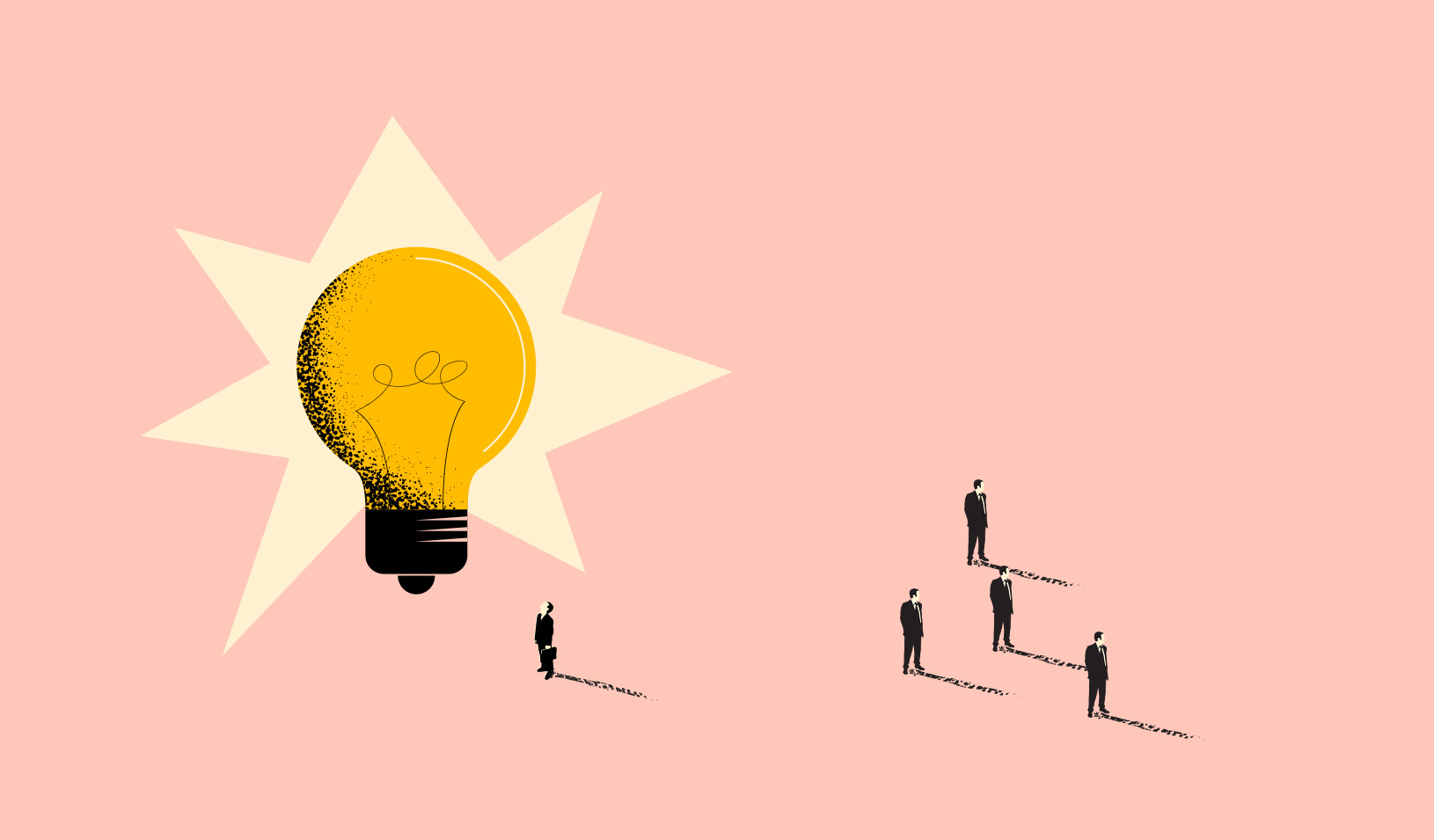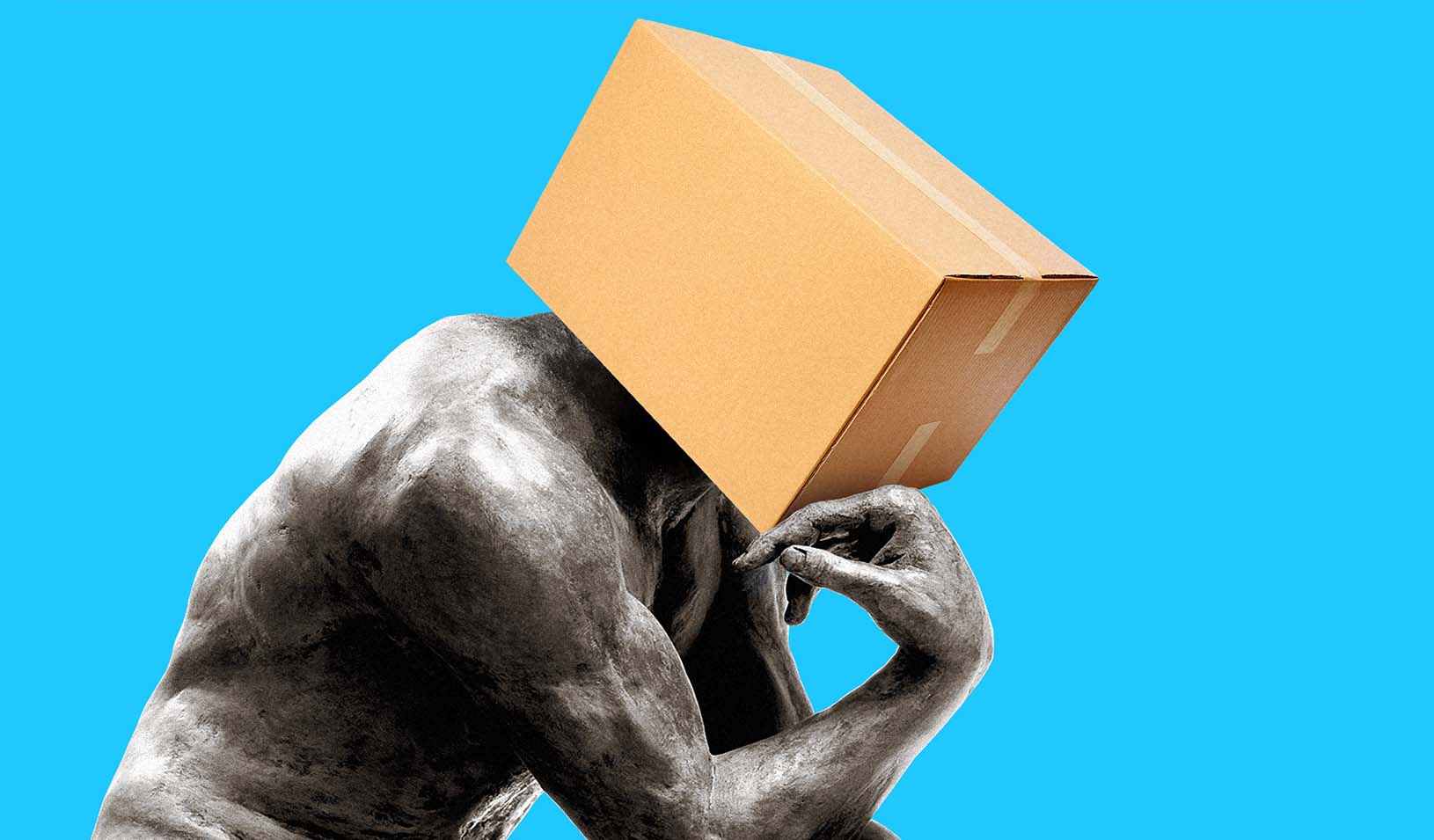
Illustration by Harry Campbell
The human brain is a sophisticated instrument. At its core, however, it’s nothing but the organ of an animal, prone to instinctive responses. This instinctual brain operates according to what I call the “X Framework,” a concept that emerges from studies on animal and human behavior, particularly those linking behavior to brain functioning.
Like our primate relatives, humans are governed by two neural pathways that you can envision crossing in an X formation. The first takes us from a state of high physiological arousal, often manifest as anger, fear, and anxiety, and governed by the chemical cortisol, down to a place of comfort, typically produced by the calming hormone serotonin. The second moves us from a state of low physiological arousal — what we think of as boredom or apathy — toward excitement, thanks to the naturally occurring stimulant dopamine.
If the brain is experiencing highly physiologically arousing emotions associated with stress, then our first instinct will be to stay away from excitement and seek comfort instead. Studies have shown that primates under stress, for example, will not pursue new territories or mates. Under stress, humans also hang on to the familiar. Once the brain calms, however, it becomes prone to boredom. It will then begin to seek arousal in the form of dopamine, from the excitement pathway. This is when both you and your baboon friend will seek out new territories.
From the perspective of innovation this is critically important to understand, and will help you get the best from yourself, your colleagues, and your boss. Here’s how:
Eat Right and Exercise
Research shows that the best way to maximize creativity is to maintain high levels of both serotonin and dopamine, which will keep a person calm but energized. But how? The path begins with proper rest. A minimum of 30 minutes — but ideally up to 2 hours — of deep sleep reduces cortisol levels and boosts serotonin.
That means arriving in bed relaxed by taking a hot shower or bath beforehand, avoiding alcohol in the two hours before bedtime, and turning off all lights, including those illuminating electronic devices, which affect the pineal gland and make people think they should be awake and alert. It also means eating lightly in the evening, and not less than three or four hours before retiring. Digesting a big meal can hamper sleep.
Diet matters, too. A high-protein breakfast is easily converted into serotonin and dopamine, while caffeine is a physiological arouser, meaning it will amplify whatever emotions one is already feeling. If a person is motivated, it will help him or her; if stressed, it will agitate — the last thing an innovator needs.
Cardiovascular exercise is also critical. When the heart muscles pump faster, they release a peptide believed to help produce serotonin. That means considering a brisk walk before an afternoon meeting — or better yet, walk and talk. Steve Jobs regularly held “walking” meetings. Mark Zuckerberg does too. The serotonin it produces not only will make a person more creative and productive but also it improves the quality of sleep, creating a positive cycle all around.
Make Decisions in the Morning
In general, it’s better to schedule your decision-making in the morning because that’s when your serotonin levels will be high. Learn why (answer begins at 1:08):
Engage Your Employees
Corporations worried about losing their edge often try to force their employees to work “better, faster, stronger” by applying more pressure or using threats and ultimatums. They believe that the stick, not the carrot, will be more effective in breeding innovation.
Studies show, however, that stress is a poor motivator. In his best-selling book, Thinking Fast and Slow, Princeton’s Daniel Kahneman explains why. Of the brain’s two basic neural pathways, the first — from anxiety to calm — does not inspire outside-the-box thinking. Workers are so insecure and stressed that they creep along in terror until they find safety. The goal, then, is to get workers engaging the second pathway — from complacency to excitement — which is much more likely to trigger innovation. That shift is achieved primarily through positive reinforcement: encouragement, respect, and enhanced responsibility.
Consider two case studies: Some time ago, a successful international consumer goods company that felt it had become too comfortable, tried to inspire its managers by cutting their advertising budgets but demanding the same — if not better — results. Given how humans are wired, that kind of innovation by desperation was only going to be effective among a small group of people who habitually tend to traverse the boredom to excitement pathway. These types naturally translate desperation into a challenge, and they tend to be younger. But for the majority of their marketing staff, it would never work.
A very different approach is exemplified by businessman Sachit Jain. A year behind me in our MBA program at IIM Ahmedabad in India, Jain graduated to marry into the family that owned Vardhman Industries in India, a conglomerate that is one of the largest suppliers of high-quality fabric in the world.
Like most men who marry into such families, he became a senior manager in his mid-20s. Jain was suddenly plunged into dealing with a textile manufacturing enterprise that had experienced so much strife that a lockdown had occurred at the factory, and the chairman had almost been killed. Amazingly, he turned the situation around — and not just that situation, but host of them since then.

Professor Baba Shiv’s research shows “walking” meetings can make you more creative and productive.
How? He started talking to his employees. In India, for a boss to sit at a table with his workers is unheard of. But Jain has persisted in regularly getting down to the shop floor level to find out what’s going on. His method for instilling an innovative spirit in an organization is to ask his employees, “What can you do in the workplace to make tomorrow better than today?” He doesn’t ask them to think about making things better for the organization. He asks them to think about making things better for themselves.
On a study trip to India with Stanford MBAs in 2011, I saw a few examples of the remarkable results of this kind of managerial approach. One was the case of a worker who had the equivalent of a third-grade education in the West. He had noticed a problem: Changing the thread spindles when they ran out was a physically stressful job. It required a team of two — one pushing a cart with the fresh spindles, and the other constantly having to move the stool, climb up and replace the spindle, and climb down. The guy on the stool was often taking sick leave because of the physical demands, which sometimes led to falls and other injuries.
In his own time after work, the factory worker began experimenting with how to propel the stool so that the worker didn’t have to keep getting up and down. Eventually, he had the idea to put wheels on the stool, and then he rigged up an electric motor to propel it. In a final ingenious flash, he adapted a sewing machine pedal to the mechanism so that the worker could stop and start it at will. The results? Less sick time, less injury, and greater efficiency and productivity.
To support the process, Jain drew on one of the most powerful motivators for innovation: social recognition. The factory worker earned tremendous social prestige by our visit, which included a private meeting with him to hear about how he came up with his idea. Other people in the company began realizing: If he can do it, so can I.
Democratizing where innovation can come from, encouraging grass-roots ideas, and utilizing social recognition are powerful methods for encouraging innovation. But the most inspiring method is, as Gandhi affirmed, to “be the change.” A manager who takes time to feed her own creative side well is the one who knows how to elicit the creativity of others best.
Understand Your Boss
Middle managers with great ideas face a challenge: how, when, and with whom should they share them? Managing from the bottom up is always tricky, and that’s particularly true when it involves bringing something new to the table. But there are several things employees should keep in mind when trying to inspire their higher-up.
The secret to success is to determine which neural pathway the target audience favors. Those focused on traveling between stress and calm will be less likely to embrace new ideas; they’re clinging to the familiar. Those riding the boredom-excitement highway will relish a new opportunity.
It’s not hard to figure out who favors which pathway; people habitually tend toward one or the other. Type I personalities, as I call them, don’t veer from the groove between stress and comfort. They’re terrified of making mistakes. By contrast, Type II personalities are those who tend to move between boredom and excitement. They typically fear missing out on new experiences and see mistakes not as debilitating but as exciting. They reframe failure as opportunity, and see challenges as something fun.
This piece is adapted from five essays on innovation in the workplace by Baba Shiv, the Sanwa Bank, Limited, Professor of Marketing, Stanford GSB, and the R. Michael Shanahan Faculty Fellow for 2013-14.
For media inquiries, visit the Newsroom.






